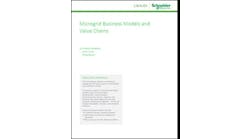We’ve all been invited to BYOB parties, but how about bring-your-own-thermostat? That’s one way to describe an unusual demand response program Austin Energy is testing for homeowners.
It’s what Austin Energy refers to as a “retail up” program, one where the utility does not install smart devices in the home, but finds and uses those that the homeowner already purchased from retailers.
Scott Jarman, a consulting engineer at Austin Energy, explained how it works in a recent interview.
When the customer buys an Internet-connected thermostat from Ecobee, Nest or EnergyHub, the vendor tags the customer’s zip code. If it’s Austin Energy’s service territory, the customer gets an invitation to join the demand-response program. The utility offers an $85 customer rebate as a sweetener. In return, the customer lets the utility remotely tap into the system to reduce air conditioning when power demand threatens to overwhelm supply (although the customer can at any time override the utility action).
For Austin Energy, already a green leader, using the customer’s equipment offers several benefits, cost savings being one, especially when compared to its older, free thermostat offering. Under that conventional “top down” program, begun in 2001, the utility installed 90,000 not-so-smart thermostats free of charge to customers. It cost the utility $190 per thermostat.
When wireless, two-way communication thermostats started to penetrate the market, Austin Energy became interested in the newer equipment, but it was expensive. That’s when it looked into the BYOT approach.
BYOT costs the utility only $125 per thermostat, which includes the customer rebate and a $25 thermostat vendor incentive. The utility also pays $15 per month to the vendor to maintain a web portal to the thermostat. This means that initially the smart thermostat costs the utility less than the not-so-smart device.
After four or five years, the cost of the smart device rises to $190 because of the $15 maintenance payment. Although it adds to the cost, the maintenance payment encourages the vendor to work to keep the customer in the program. As a result, the device is more likely to stay on the wall, according to Jarman. In contrast, Jarman estimates that consumers had abandoned about half of the not-so-smart thermostats in its free program after 10 years. When a customer drops out, energy savings fall, and overall program costs rise.
“So it’s less expensive for me to do this than my top-down model, and I get more capability,” said Jarman, who is responsible for Austin Energy’s commercial and residential demand response development.
Further, the utility realized that the program might become difficult to manage as more and more vendors join, adding different kinds of thermostat systems. “If we had, let’s say, 10 vendors out there it would become very unwieldy for us to initiate curtailment and manage enrollment,” he said.
Enter AutoGrid
That’s why Austin Energy brought on California software company AutoGrid to coordinate the process with its cloud-based Demand Response Optimization and Management System, or DROMS. So far, DROMS has performed successfully for Austin Energy in demand response events that occurred over five days in July and early August.
“AutoGrid can talk to a variety of web portal providers, who then talk to a variety of thermostats,” Jarman said.
Stuart Lombard, president and CEO of Ecobee, said that Austin Energy and AutoGrid “are creating a blueprint” that will make demand response a more widespread phenomenon. Utilities tend to focus on demand response for commercial and industrial accounts. But they are increasingly interested in aggregating residential accounts to reduce peak demand.
“Consumers want to participate in these programs and lower their bills, but they also want to have the final word on what thermostat will best suit their home comfort needs,” Lombard said. “We believe this sort of flexibility and control, along with the lower costs inherent in a software-based system, will accelerate the implementation of demand response.”
The utility is still collecting data on the new pilot. But one thing is for certain: Texas can use more demand response. With temperatures exceeding 100 degrees this summer, the air conditioners are humming. Texas has a growing population and its market has been slow to respond with new power plants. In fact, it is now the only place in the US that has failed to meet its target reserve margins, according to the US Energy Information Administration. Too much demand and not enough supply is the recipe for rolling blackouts. Keeping the lights on in Texas may require some innovation, the kind Austin Energy offers.






